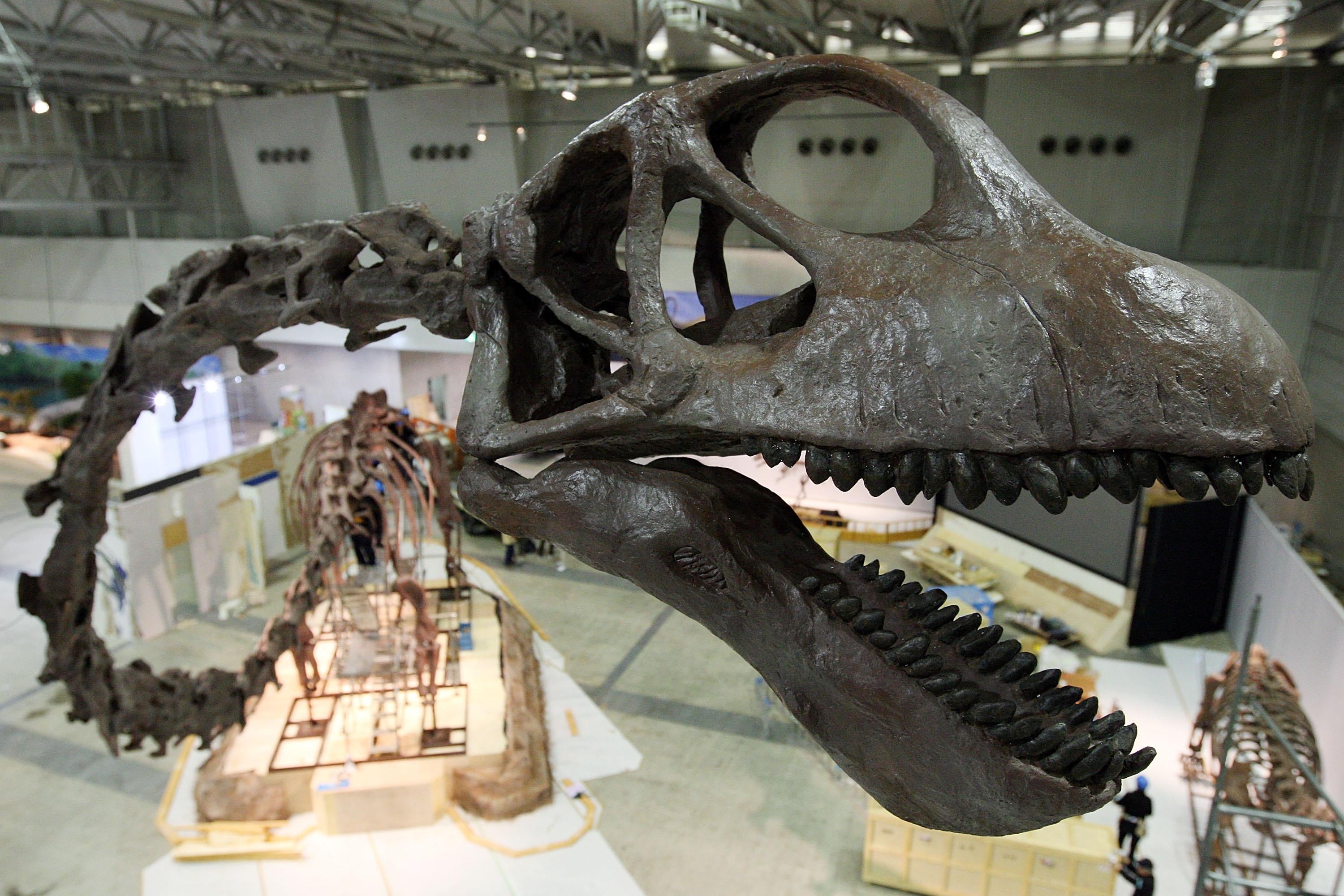In 1841, in the early days of paleontology, the notoriously cantankerous anatomist Richard Owen, the man who would later coin the term “dinosaur,” stood before his colleagues at the Geological Society of London to announce the discovery of an enormous extinct reptile. The monster was represented by only a smattering of fossilized bone, but Owen nevertheless ascertained that the animal’s tail bones “equaled in dimensions a middle caudal vertebra of a full-sized whale.”
Owen’s name for the creature—Cetiosaurus, the “whale lizard”—played up the creature’s gargantuan size, and scientific showman that he sometimes was, Owen left the assembled scientists with the idea “that the surpassing bulk and strength of the Cetiosaurus were probably assigned to it with carnivorous habits, that it might keep in check the Crocodilians and Plesiosauri” that swam the same Jurassic seas.
Owen was almost totally wrong in his initial description, but I can’t blame him. The more-complete skeletons that would show Cetiosaurus to be a one of the long-necked, herbivorous, heavy-bodied sauropods hadn’t yet been found. At least the name is still on the mark. An adult Cetiosaurus was as long as a mature male sperm whale, around 52 feet.
Other sauropods grew even larger than that. Supersaurus, Argentinosaurus, and Diplodocus were the largest creatures to ever walk the Earth, stretching more than 100 feet from their pencil-like teeth to their sinuous tails. But that “walked the Earth” clause is important. While no terrestrial creatures ever approached these sizes, the largest whales can make sauropods look rather skinny. When it comes down to it, who can rightfully lay claim to the title of the largest animals of all time: dinosaurs or whales?
Prehistory fan that I am, I’d love to see sauropods to go home with the title. With 45 feet of neck alone, a 110-foot-long Supersaurus would seem to be a clear winner, and there are rumors of dinosaur specimens that push the size limit even further. But the sad truth is that two factors might keep sauropods from winning out over the whales.
Fossilization was not very kind to the biggest dinosaurs. All of the heavyweight contenders are known from partial skeletons. Argentinosaurus—often cited as the largest known sauropod—is known from little more than a few vertebrae, ribs, and leg bones. Likewise, the biggest Diplodocus is a collection of vertebrae and hip bones, and Supersaurus fares only a little better with the most complete specimen consisting of vertebrae, some limb bones, and parts of the hips. And don’t even get me started on Amphicoelias—a sauropod represented by a single piece of vertebra that disappeared over a century ago but that may have belonged to a dinosaur 190 feet long. Nothing more of Amphicoelias has ever been found.
All of those sauropod sizes are extrapolations based on smaller species known from more complete fossils. But even if Diplodocus and company really were as long as estimated, they would have been light for their size.
A series of air sacs extending from the lungs infiltrated the bones of these dinosaurs, helping to keep them light without sacrificing strength. While an estimated weight of 45 tons for Supersaurus sounds like a lot—especially when translated into about seven African elephants, a traditional unit of measurement for dinosaur size—that’s trim for such an enormous animal. That gives whales the advantage.
The blue whale is the largest animal alive on Earth today, although the exact maximum size is something of a moving target in the literature. This prodigious species is thought to be capable of reaching 110 feet in length, and the largest scientifically verified individuals on record are 89 to 98 feet long. (If you’re wondering why we don’t have more exact lengths for this living species, consider the difficulties in measuring a blue whale. A tape measure isn’t going to be much help.) That’s getting awfully close to the estimated lengths of the biggest dinosaurs.
Weight makes all the difference. Living exclusively at sea for more than 40 million years has freed whales from the evolutionary engineering constraints that land creatures—including dinosaurs—suffered. Thanks to water’s buoyancy, whales can be far heavier without collapsing on themselves. A 100-foot-long blue whale can weigh 150 tons or more, three times heavier than a dinosaur of the same size.
Much as it pains me to do it, I have to hand the title of “Largest Animal of All Time” to Team Cetacea.
But if we look beyond the superlative, the close call between dinosaurs and whales highlights an underlying pattern in what giants can achieve.
Disregarding tonnage, the largest sauropods and whales both reached lengths of about 100 feet. Rather than being evolutionary coincidence, this might mark an evolutionary upper bound that animals may not be able to circumvent without drastic alterations to their biology.
In a 2012 study, paleontologist Mathew Wedel pointed out that, much like the blue whale, sauropods such as Supersaurus likely had sensory nerves that stretched all the way from their brainstems to the tips of their tails. Such long neurons would have meant relatively long transit times for impulses traveling between brain and tail. A particularly efficient conduction speed along neurons is about 300 feet per second, which means long animals would have pretty slow reaction times. The upper limit on size could be a sign, Wedel writes, “of animals approaching the real physical and chemical limits on living systems.”
Whales might have run into such limits. Even if life at sea could support the weight of super-whales, the constraints of biology—from nerve connections to simply acquiring enough food—might make them impossible. After five million generations and a 5,000-fold increase in size, whales may be about as big as it’s possible to be. I can only hope that someone uncovers an astoundingly huge sauropod that makes us revise what we thought we knew and puts the dinosaurs back in the running for the title.
